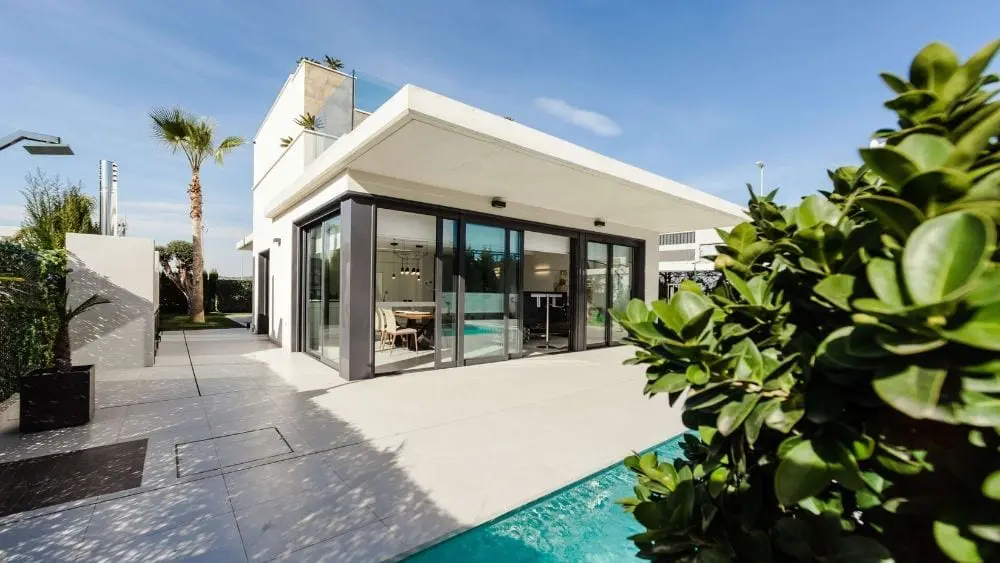
Now that you’ve signed a contract to purchase your new home, how do you customize it to make it your own?
One of the advantages of purchasing a new home is the opportunity to select features and finishes that reflect your own personal tastes and lifestyle. But for many homebuyers, particularly first timers, the array of choices can be dizzying.
Cabinets, countertops, flooring, fixtures, appliances — and even structural changes such as additional bathrooms or garages — are just the beginning of a potentially endless choice of options or upgrades that your builder may allow you to select.
So what’s a buyer to do?
Structural Changes
Select structural additions or changes when you sign the contract, or immediately thereafter. “Buyers are a little overwhelmed when they sign the contract because of all the legal documents,” says Sue Goodrich, vice president of sales and marketing for Cachet Homes in Scottsdale, Ariz. “The only thing we talk about then is structural options.”
Buyers who want to add rooms or garages, move doors or add a fireplace or recessed lighting, for example, need to make their structural changes early in the process because those changes may impact the building permit pulled by the builder. These types of changes — as well as any electrical or plumbing changes that would require walls to be opened — would also be costly to make after the home is completed.
Post-Purchase Upgrades
Remember that it might make sense to make certain changes after you purchase your home. Cosmetic features in particular, such as paint, landscaping, lighting and plumbing fixtures, epoxy garage flooring, crown molding, chair rails, window treatments and even certain appliance upgrades can often be made after the closing, particularly by homeowners who have a budget.
Grenadier Homes in Dallas, for example, doesn’t include refrigerators in the base price of their homes, says Kathy Costa, a Grenadier Homes design consultant. That way buyers might be able to get a good deal on their own. Still, by purchasing these upgrades through the builder, you might be able to roll the cost into your mortgage, as opposed to paying out of pocket.
In addition, upgrades completed after the closing will not be covered by the builder’s home warranty — and may void it, Costa warns.
And, of course, there is the hassle factor as well: are you willing to spend time after the closing to work on your home — or would you rather move in knowing that your home is exactly the way you want it to be?
Builder Timeline
Follow your builder’s timeline to select other options or upgrades. About two to three weeks after the contract is signed and approved, your builder will arrange a meeting at its design center. Depending on the builder, you may or may not be able to make changes after this meeting, so be prepared with a list of the items you want. Consider bringing photos of kitchens and baths you like to help guide the designer.
The Model Look
Remember that the model home you fell in love with may have thousands of dollars of options and that the base home may look very different. While many builders include a number of standard features in the base price of their homes, others don’t. That thick carpeting or granite countertop may cost extra.
Prepare a Budget
Prepare a budget — and stick to it. Walking into a builder’s design center is a little like being a kid in a candy store. You’ll see cabinets and granite and top-of-the-line flooring. To avoid overspending — and overextending yourself — prepare a budget before your design meeting.
Goodrich, of Cachet Homes, says that a good rule of thumb is to expect to pay about 12 percent of the base price of a home on interior upgrades. Make sure that the price of your home, including any upgrades, falls within the pre-qualification guidelines for your mortgage.
Needs Versus Wants
Be flexible. Remember that you have a budget and that you may not be able to afford all of the extras you’d like, so prepare a list of must-haves and want-to-haves. For example, Joel Whitley and his wife Taylor purchased a three-bedroom, two-bath home from Cachet Homes at the Santa Rita community in Phoenix for $346,900.
The couple budgeted an additional $30,000 for options, of which they spent $26,000 to upgrade cabinets and flooring and to add additional ceiling fan outlets and a soft water loop for a water softening system.
“We would have loved to do a backsplash throughout the entire kitchen, but we knew we didn’t have the budget for that,” says Whitley. “So we came up with a compromise where we have a backsplash just behind the oven in a fancy stone design.”
Resale Value
Don’t over-customize. Of course, new-home buyers want their homes to reflect their personal style and taste. But, it’s important to consider the resale value, as well. “Those lavender granite countertops in the kitchen that you’re thinking about may make your home difficult to resell in a few years,” says Andy Weiser, a real estate agent with Coldwell Banker in Fort Lauderdale, Fla.
“A better choice might be to paint the walls a great shade of lavender, but to go with more neutral countertops. That way, when you decide to move, you will appeal to the most buyers possible.”
Builder Trust
Deal with a builder you trust. Its design team will guide you through the process and offer expert advice on not only design choices, but also how best to apply your budget.
“It’s their job to make your home everything you want it to be,” says homebuyer Whitley. “Trust your home builder for their expertise. After all, this is what they do every day.”

Robyn A. Friedman is an award-winning freelance writer and copywriter who has been covering the real estate and housing industries for over two decades. She writes the “Jumbo Jungle” column for The Wall Street Journal, is a real-estate and personal-finance columnist for City & Shore magazine, covers celebrity real estate for the South Florida Sun-Sentinel and also contributes regularly to Commercial Property Executive, Multi-Housing News and numerous other publications.
 Pros and Cons of Installing a Sprinkler System for Your New Home
Pros and Cons of Installing a Sprinkler System for Your New Home
Michael Williams
How much do you think it would cost to add a bathroom to a separate bedroom for new construction?
Jamie Garcia
Hi Michael,
You can discuss all changes and upgrades to your floorplan with your builder to get an accurate cost.